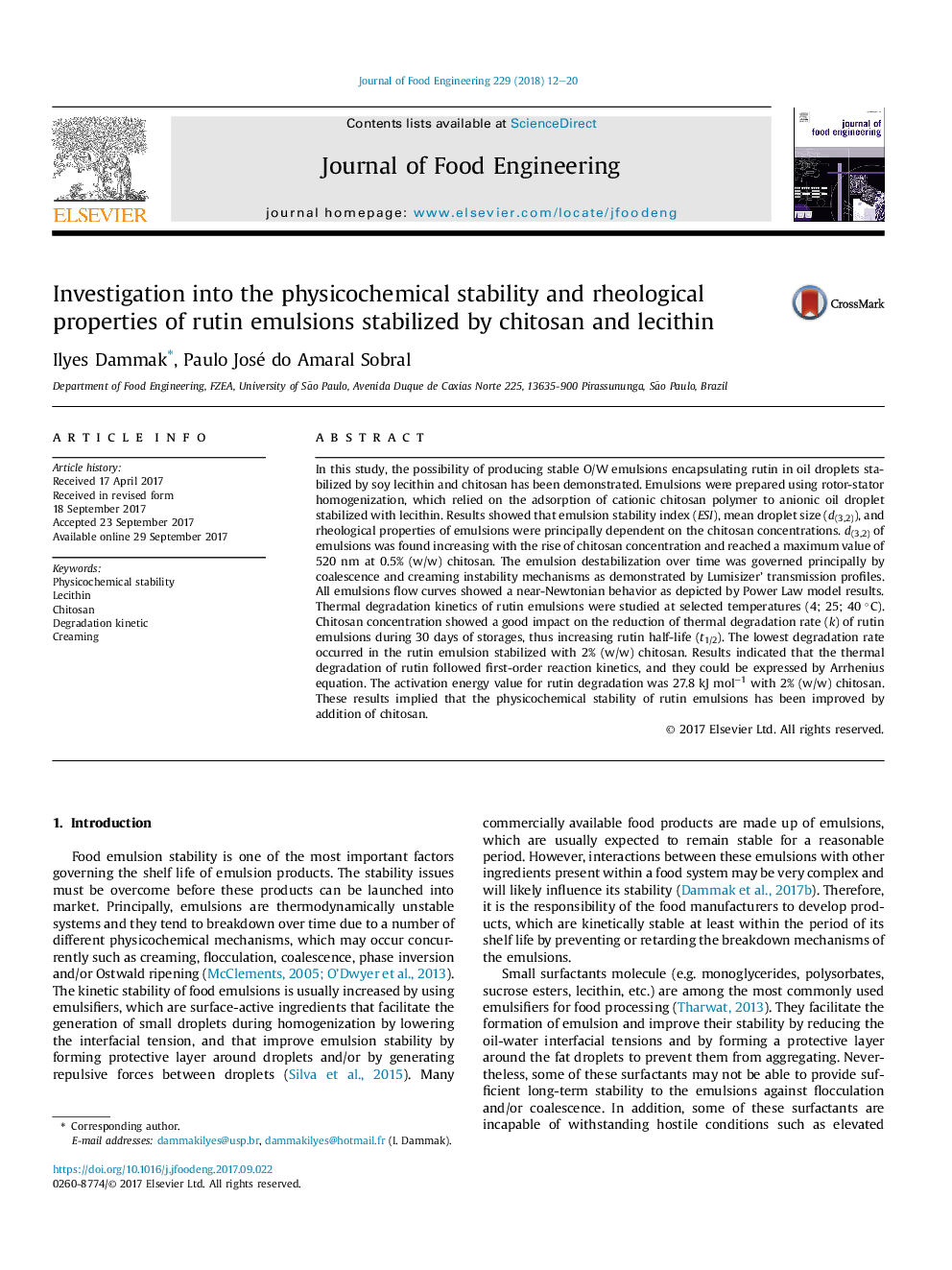| Article ID | Journal | Published Year | Pages | File Type |
|---|---|---|---|---|
| 6664557 | Journal of Food Engineering | 2018 | 9 Pages |
Abstract
In this study, the possibility of producing stable O/W emulsions encapsulating rutin in oil droplets stabilized by soy lecithin and chitosan has been demonstrated. Emulsions were prepared using rotor-stator homogenization, which relied on the adsorption of cationic chitosan polymer to anionic oil droplet stabilized with lecithin. Results showed that emulsion stability index (ESI), mean droplet size (d(3,2)), and rheological properties of emulsions were principally dependent on the chitosan concentrations. d(3,2) of emulsions was found increasing with the rise of chitosan concentration and reached a maximum value of 520 nm at 0.5% (w/w) chitosan. The emulsion destabilization over time was governed principally by coalescence and creaming instability mechanisms as demonstrated by Lumisizer' transmission profiles. All emulsions flow curves showed a near-Newtonian behavior as depicted by Power Law model results. Thermal degradation kinetics of rutin emulsions were studied at selected temperatures (4; 25; 40 °C). Chitosan concentration showed a good impact on the reduction of thermal degradation rate (k) of rutin emulsions during 30 days of storages, thus increasing rutin half-life (t1/2). The lowest degradation rate occurred in the rutin emulsion stabilized with 2% (w/w) chitosan. Results indicated that the thermal degradation of rutin followed first-order reaction kinetics, and they could be expressed by Arrhenius equation. The activation energy value for rutin degradation was 27.8 kJ molâ1 with 2% (w/w) chitosan. These results implied that the physicochemical stability of rutin emulsions has been improved by addition of chitosan.
Related Topics
Physical Sciences and Engineering
Chemical Engineering
Chemical Engineering (General)
Authors
Ilyes Dammak, Paulo José do Amaral Sobral,
